The following photo collection illustrates how the commercial aviation industry has dramatically changed over the past century.
From the first flights in the early 20th century, to the “golden age” of aviation in the 1950s, and to the modern era today, air travel has undergone significant transformations in passenger experience.
1920s
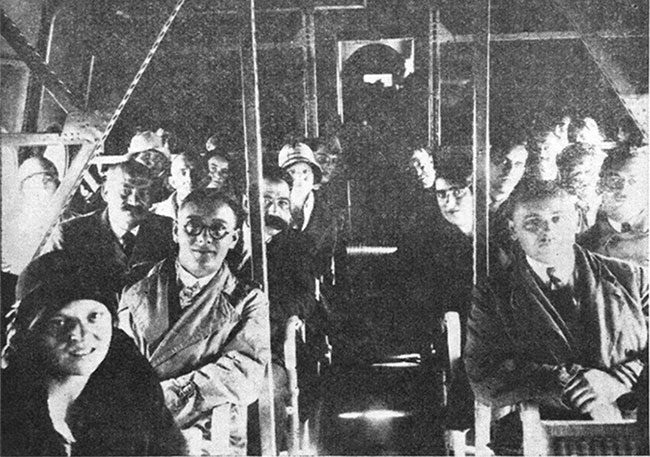
The 1920s marked the first time in history that airplanes were specifically designed for carrying passengers. During this period, planes typically carried fewer than 20 passengers, cruised at altitudes of 1,000 meters or lower, and were slower than trains, flying at about 160 km/h. They needed to stop frequently for refueling and could only fly during the day.
Flying in the 1920s was an uncomfortable experience for passengers due to the extreme noise and cold, as planes were made of metal sheets that were not insulated and shook violently in the wind. The cabins had no pressure adjustments. However, air travel continued to gain popularity and laid the groundwork for future developments.
1930s
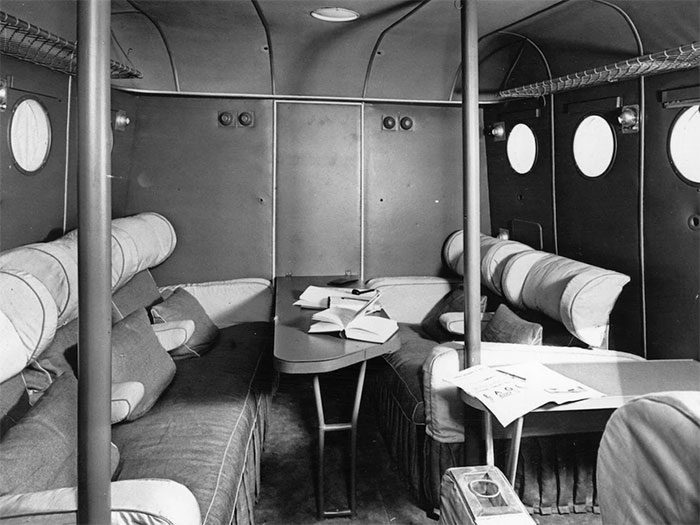
In the 1930s, flight attendants made their debut, helping to make flying a more comfortable experience.
Not only was the service better, but the airplanes themselves became more comfortable. They were soundproofed, heated, and equipped with cushioned fabric seats. Planes could also fly much higher, reaching altitudes of about 6,000 meters, which minimized turbulence and made flying significantly faster (around 320 km/h). The first pressurized commercial transport aircraft was introduced in 1938.
The cabins became more spacious and creatively designed with lounge seats, reclining chairs, and swivel seats.
1940s
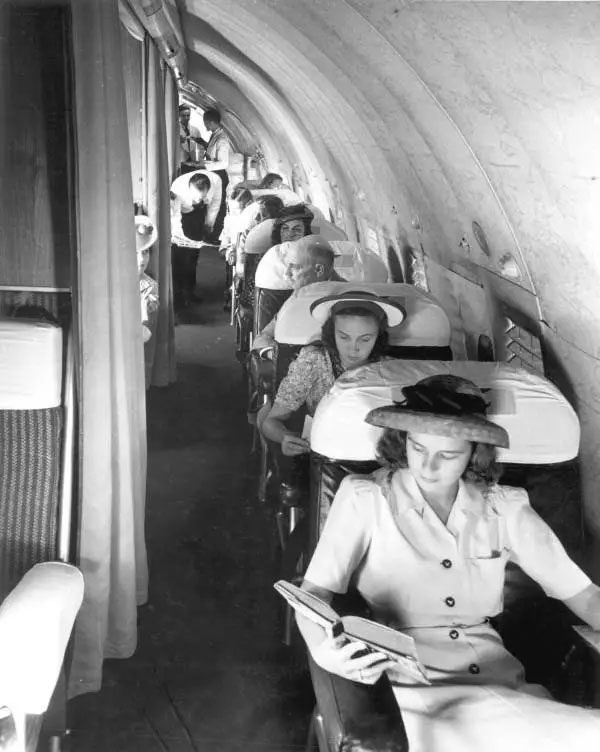
Air travel changed significantly during World War II, as aircraft were primarily developed for military purposes rather than commercial use.
However, after the war ended, the United States and Europe were left with a surplus of aircraft and large airbases with long runways that were repurposed for commercial flights. New airports were built near major European cities, like Heathrow Airport in London, which was completed in 1946, and transatlantic flights, such as between New York and London, became commonplace.
1950s
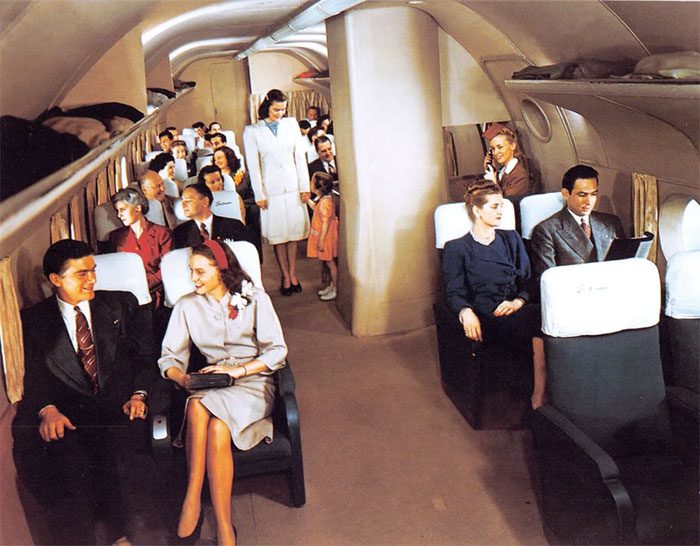
Dubbed the golden age of aviation, flying in the 1950s was not cheap. In fact, a round-trip flight from Chicago to Phoenix could cost the equivalent of 25 million VND today when adjusted for inflation. A one-way flight to Europe could exceed 70 million VND based on current prices.
However, passengers received service that matched the cost. Flights felt luxurious: people dressed smartly, wine was served in fine glassware, and meals included dishes like roast beef, lobster, and prime ribs.
1960s
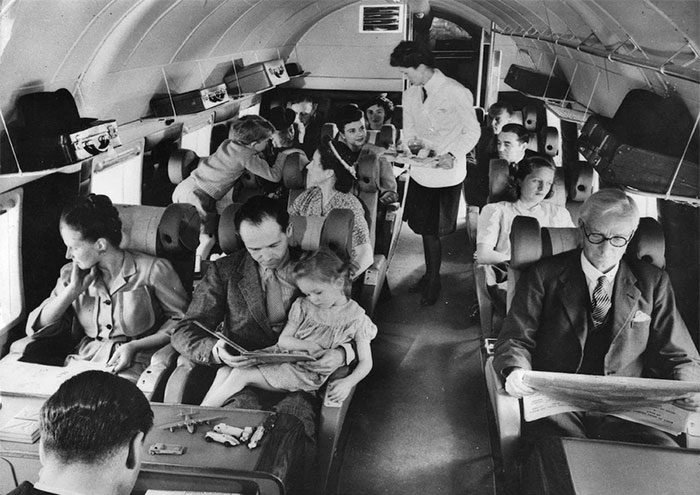
Flying became increasingly comfortable. In the 1960s, passengers did not dress as formally as before, but they generally looked better than later years.
Passengers in the 1960s could also fly without any form of identification. This meant they could arrive at the airport just half an hour before departure and go directly to the gate. Even family members could walk to the gate without a ticket to see off their loved ones.
Security checks became mandatory in 1973, and even those checks were quite relaxed compared to the airport security we experience today.
1970s
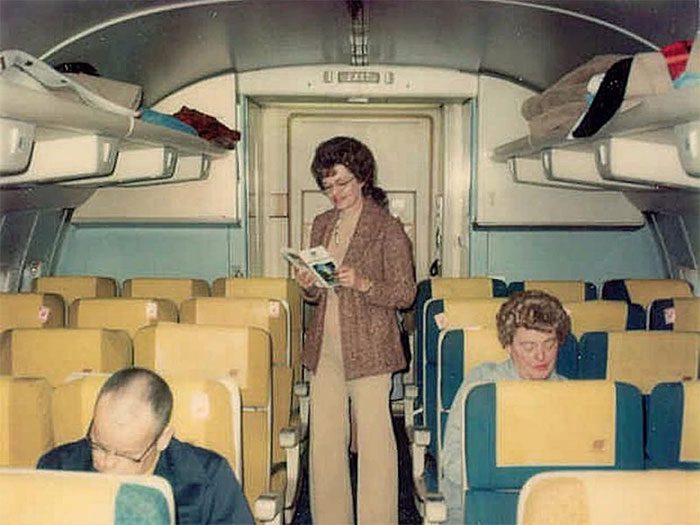
The 1970s marked the beginning of the “Jumbo Jet” era, opening the skies for millions of travelers who previously could not afford to fly, as airlines could transport large numbers of passengers, allowing them to sell tickets at more affordable prices. However, space remained generous, and flight attendants catered to all passenger needs.
From 1970 to around 1974, American Airlines even equipped their 747s with piano lounges at the back, while Pan Am’s 707 Clipper was marketed as “smooth as silk.”
1980s
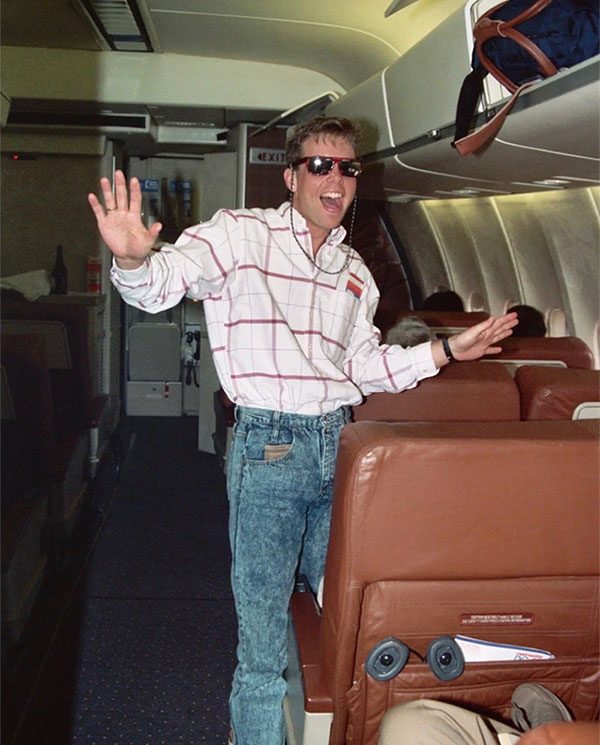
In the early 1980s, flying was quite enjoyable. You could smoke, enjoy meals, and check in unlimited luggage.
Continental Airlines (now United Airlines) even experimented with a complete “Pub” configuration featuring a bar stocked with liquor and round tables with swivel chairs.
Passengers could also visit the cockpit during flights, where children were given commemorative wing pins to remember the experience.
1990s
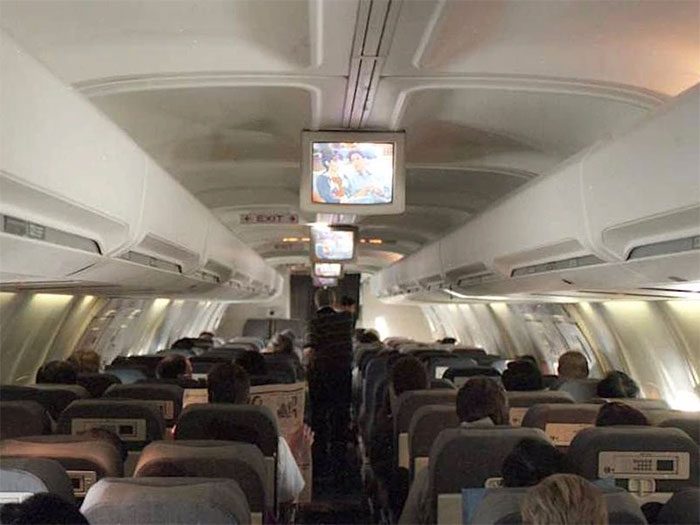
Aviation in the 1990s allowed all passengers of all ages, including economy class, to enjoy free alcohol on international and domestic flights. Meals were also included in the ticket price, seats were equipped with telephones (remember, this was before mobile phones), and in-flight entertainment was in its early stages.
2000s
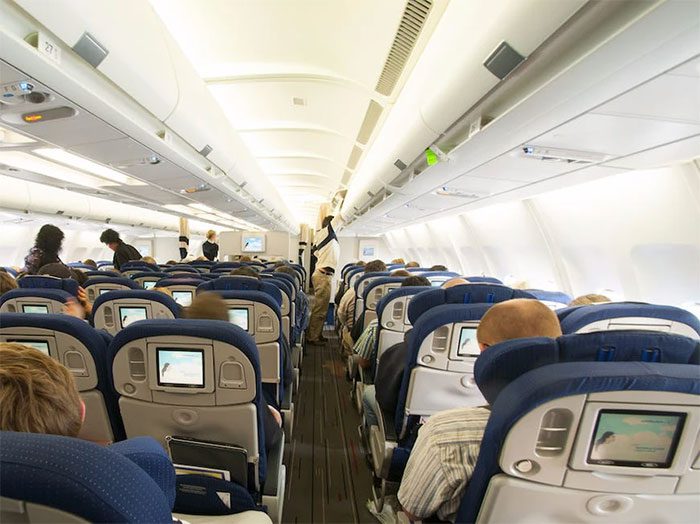
After September 11, 2001, air travel changed significantly.
Before the attacks, travelers could pass through security checkpoints with items including liquids, small pocket knives, and large coats. Passengers could also wear shoes through security.
All of this changed after the attacks, and airport security evolved into what we know today. Cockpit doors began to be reinforced and locked, and only ticketed passengers were allowed into the airport gate areas.
Today
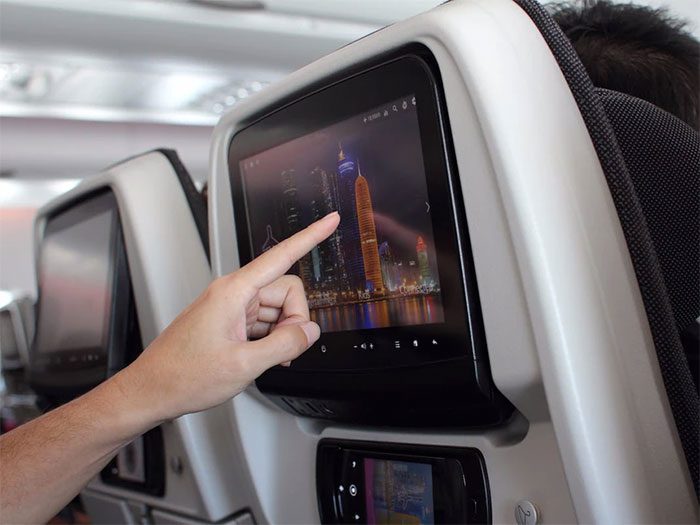
Today, flying comes with amenities similar to those we are accustomed to on the ground—from touch-screen TVs to USB chargers at every seat.
Although free alcohol and even meals in economy class may no longer be common, if passengers are looking for a five-star experience like in the past, first-class tickets today can be more appealing than ever.




















































